Legends and myths of the Great Patriotic War. The human factor of the Red Army Air Force and the Luftwaffe
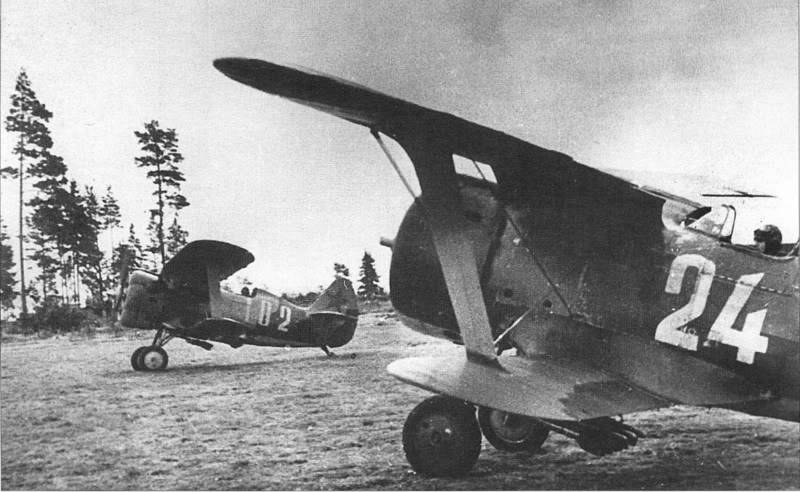
In two previous materials, we talked about the number and quality of aircraft on 22.06.1941/XNUMX/XNUMX. In one of the articles I promised to talk about the human factor.
Let's start from the bottom, with the training of pilots. In our difficult time, people publish just a mountain of information on how everything was bad in the Red Army Air Force in terms of training pilots. I have great doubt about the information that pilots were thrown into battle with 2-3 hours of flying time on a combat aircraft.
I will quote from such revealing material, so to speak. Spelling saved.
The fact that figures have reached our times right up to the minute is, of course, great. And here we run into the literal sense of the word on dual sensations.
On the one hand, oh how deplorable everything is! The Germans flew for 200 hours, the Americans for 450, and ours - nothing at all. They buried corpses and all that.
Sorry ... Pokryshkin - three times Hero of the Soviet Union. Sultan Amet Khan - twice Hero of the Soviet Union. Dolgushin - Hero of the Soviet Union. Garanin - Hero of the Soviet Union.
It’s somehow strange, right? 10 hours of Pokryshkin and 200 hours of Hartman - is this a different clock? One allowed them to become one of the most useful (namely useful, and not productive) pilots of World War II, and the other - to draw through the false "Abshussbalken" and cling to themselves trinkets.
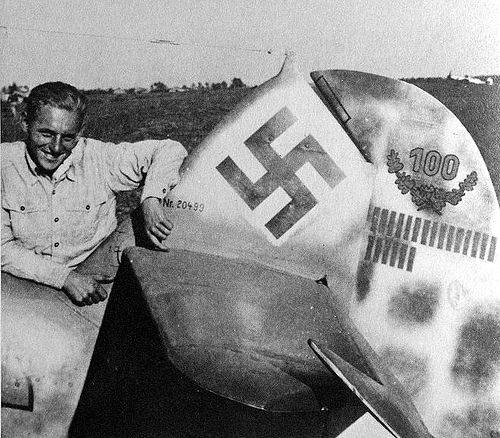
Oh yes, such non-punctual Germans lost Hartman’s flight book ... Apparently, that she didn’t get to Zadornov.
By the way, in vain. So many Russians could be destroyed. Laughing would burst, reading the writings of Hartmann, well, to hell with him, hello to the special Luftwaffe cauldron in hell.
I specifically do not cite the author of that scribble, simply because it is in bulk on the Internet. But that Belarusian wrote, somewhat not understanding the essence of the numbers, alas. And the numbers speak of very interesting things.
200 hours of Hartman’s training allowed him, especially not fighting (attacks from the clouds and other “tricky” Hartman’s maneuvers do not need such training), to shoot down more than 100 aircraft. 10 hours of Pokryshkin’s preparation allowed him to shoot down 59 aircraft and bombers and attack aircraft to shield Hartman from the whole war.
And here’s the paradox, Hartman Pokryshkin couldn’t do anything!
And yes, this whole crowd of aces of the Luftwaffe for some reason did not allow Germany to win the war in the air. It’s a shame, probably, the “Abshussbalkenes” were petty, flaunted with crosses, and nevertheless, Germany was in ruins, the Soviet attack aircraft that they did, they did with the front line of defense from Koenigsberg to Constanta, and from Pokryshkin in the air the sphincters relaxed at the most experienced aces .
For some reason, we did not announce the presence of Hartman or Rally in the sky. And even if they had announced, the untrained “Ruspilots” would have surely come running with the intention of checking how cool the German aces are. Checked the same. Repeatedly.
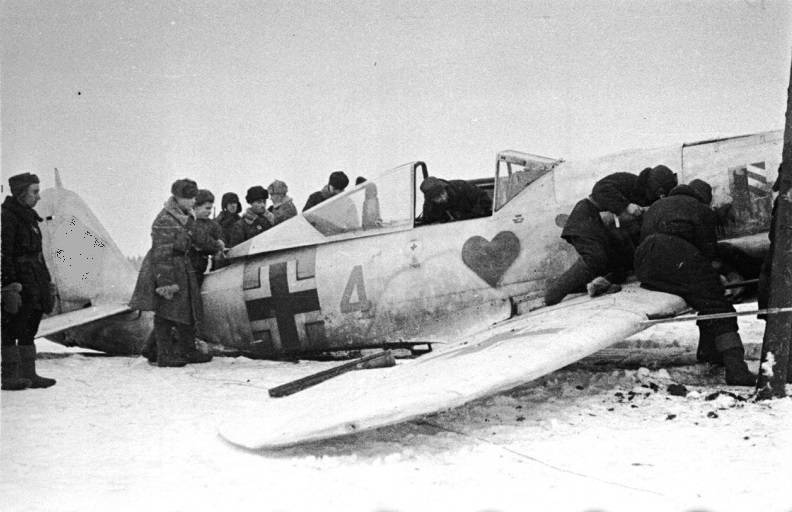
You know, here it’s obvious not how many hours were spent on pilot training, but how these hours were spent. Here, obviously, the essence can be revealed. You can spend 500 hours training a pilot, but it will turn out, sorry, Rudel. You can spend 20 hours and get a pilot who calmly drives Rudel into the coffin.
The issue is exclusively quality.
Further, I will cite as evidence a certain Walter Schwabedissen, who inspired an opus entitled "Stalin's Falcons". In general, the book is cognitive in terms of aviationbecause Schwabedissen knew what he was writing about. In technical terms. But for the rest - that’s still a cocktail, because what only Schwabedissen did not command. And he sat in the anti-aircraft corps, and the regiment of night fighters, and in headquarters. But he didn’t fly, he didn’t approach the Eastern Front for a shot, but he wrote about our pilots. Nobody will forbid, right?
Heartbreakingly. “Tens of thousands of bodies covered the Luftwaffe” - this is strong. I did not understand a bit how it is. Rammed, or what? Top falling?
Okay, that’s not the point. The point is another story of Schwabedissen. Pondering about the bad Soviet aircraft, about how insignificant the command of the Red Army Air Force was, the German suddenly gives out this:
That is, the IL-2 terrified the Germans already in 1941, and, despite the scanty preparations, the Soviet pilots flew when the German aces did not even think about flying, because it was too dangerous?
In general, yes, we can say that the Russians flew because they did not understand that it was impossible to fly. Dangerously. From lack of preparation.
Funny right? Experienced and trained Germans sit at airfields and drink schnapps because the weather is not flying, and inexperienced Soviet pilots fly and have a hard life with the German infantry.
Excuse me, did I understand everything correctly? Inexperienced pilots with 10 hours of preparation calmly flew in the rain, fog, poor visibility, found German positions and worked on them? Did German flyers with 200 hours of training sit on their tails exactly?
One wants to say: “On the contrary, it would be necessary ...”
It is definitely impossible to say that on 22.06 the Germans did not have an advantage in training. Yes, it was, but not so fatal. A pilot with 200+ hours behind his back is a piece of goods, whatever one may say.
But let's see if everything was so sad with us?
Not by that much. Yes, we didn’t have time, but: at the March plenary session of the Central Committee of the All-Union Communist Party of Bolsheviks of 1940 — and this, excuse me, is the level — new guidelines were adopted in training flight personnel.
The Red Army Air Force also organized a multi-stage training system, some not-so-conscientious researchers are trying to present a picture of what was sent to the front from the flying club. How real it is with the front - in general, a special conversation, but after flying in the flying club for 20-25 hours, a person ended up in a military school of flight personnel, where his training continued.
Military schools have already given specifications, trained pilots for fighters, bombers and scouts. The latter were abolished in 1941. As part of the military school program, the fighter pilot received another 24 hours of flying time, and the bomber received 20 hours.
And only then did the higher command school go. There, the training program determined up to 150 hours of preparation.
It is clear that the “before” is both 50 and 100 hours. But in general, yes, on paper, the program looked no worse than the Germans. The issue of implementation was, but I do not think it was so significant. The veterans themselves in their memoirs said that 10 hours was more than enough to understand the plane. And for an experienced pilot, and even after I-16 school, the question of retraining to another model was not at all.
On the issue of mass. The number of educational institutions was increased, if in 1937 there were 12 of them throughout the country, then at the time the war began - 83. The number of training aircraft increased from 3007 in 1937 to 6053 in December 1940.
They did not manage to fully implement the program, but nevertheless, in 1941 the Germans were not met by cadets of flying clubs with 2-3 hours of flight on the I-15.
There were losses at the beginning of the war, the losses were enormous, but: the merit of the aces of the Luftwaffe here is not as huge as it is shown by the cursors stories. Many pilots simply perished in encirclements, boilers, boarded a forced on enemy territory.
In previous articles, I made a statement (and I think I proved it) that, technically, the Red Army Air Force was much inferior to the Luftwaffe. But not in terms of pilot training, for how, excuse me, then explain the very impressive losses of the Germans?
In the statement that there were 1 destroyed Soviet ones for the initial stage of the war per 6 downed German plane, it makes sense. Not shot down, but destroyed. Fighter aircraft, anti-aircraft artillery, bombs, left at airfields due to lack of fuel and so on.
However, then everything leveled off. Soviet schools and colleges continued to take shots from flying clubs and teach them. Yes, there were accelerated courses, but these are 10 and 6 months, respectively. Plus ZAPy, plus training shelves where training continued.
And you can criticize the Red Army Air Force training system for as long as you like and praise the German, but ... Why did the Germans end with the pilots? Aces why in the earth were?
Indeed, in theory, the Luftwaffe aces were supposed to knock their teeth in one’s left and right, knocking these heaps of unprepared Soviet pilots who climbed in thousands ... well, not on embrasures, let's say, on the trunks of the Messerschmitts and Focke-Wulfs.
But it didn’t happen. And somehow the aces started ... ending ... Moreover, on all fronts.
And in 1943, the Germans did not have any advantage in the quality of training of flight personnel. This is noted by those who fought, shot down and remained “alive, intact, eagle” from among our pilots. And they, you know, know better.
So all these fantasies about the “cool German training school” of the Luftwaffe and none of the Red Army Air Force are nonsense. It turns out quite the opposite, the Soviet school turned out to be cooler, because it was the Luftwaffe that ended. And in 1945, the Germans already had something for green beginners. But in fact, the air war by the Germans was lost in the East, and in the West, and over Germany.
In general, it was always common for the defeated to tell how cool they were and what prevented them from winning.
But the Luftwaffe also had strengths, especially at the beginning of the war, which led to success. This should be noted. As I said, excellent tactical coordination and the ability to create a strategic advantage.
Given the completely different structure of the air forces of the two armies, at the initial stage the Germans could very beautifully create an advantage not only in airplanes in an important direction, but also qualitatively in terms of personnel. Ace squadrons including. And yes, here they got an advantage in the full program.
Plus a more modern tactic, which I also talked about. The layered six fighters, which have a connection with the ground forces and their own command, will work out the area much more efficiently than the three planes without communication at all.
However, everything is perfectly painted about this with Pokryshkin. As soon as ours changed their approach to tactics, when the flightless mines like Kraev were replaced by normal combat pilots like Pokryshkin, the Germans generally felt sad.
And then, the search for excuses began, such as "filled up with corpses" and a demonstration of exaggerated accounts. From my point of view, puffed ones who want to pray for them - please, but it's not about the numbers.
The bottom line. The fact is that at the end of the Luftfaffe war, where Hartman and the company were well-trained free hunters, all of them were in crosses and Abshussbalken, but their army, which was pressed by the Red Army Air Force, was howling and swearing, but the hartmans could not do anything.
Why, all of Germany was moaning under American and British bombs, but alas, the Luftwaffe could offer nothing more to the Germans.
And the result is sad: 1945, ours are also in the stars on the fuselages, but the Germans fly only when it is possible, and not when it is necessary to carry out tasks.
The different concept of the use of the Air Force in the USSR and Germany led to different patterns of action in the air and different final indicators for the shot down enemies. But if the Germans put this at the forefront, then our main goal was to carry out a combat mission. Therefore, Alexander Pokryshkin, drooling on the floor, continued to cover the attack aircraft, looking after the dumping Eric Hartman.
And thanks to such tactics and strategy, the Red Army Air Force fulfilled its strategic task of destroying the fighting force of Germany, and the Luftwaffe ... And the Luftwaffe completed the task of shooting down aircraft!
Successful work on the ground forces of the enemy was of paramount importance to us, naturally, the Red Army Air Force suffered losses in the air from both enemy fighters and air defense, but this is normal and justified by the task!
In the initial period of the war, given the completely outdated tactics and the minimal desire of the Soviet commanders to change at least something, the Germans had an advantage.
And here I consider the main drawback of the leadership of the Red Army Air Force to be the complete absence of any initiative and desire to think. You can talk about how poor bloody Stalin repressed generals from aviation, but here the most striking example is General Kopets.
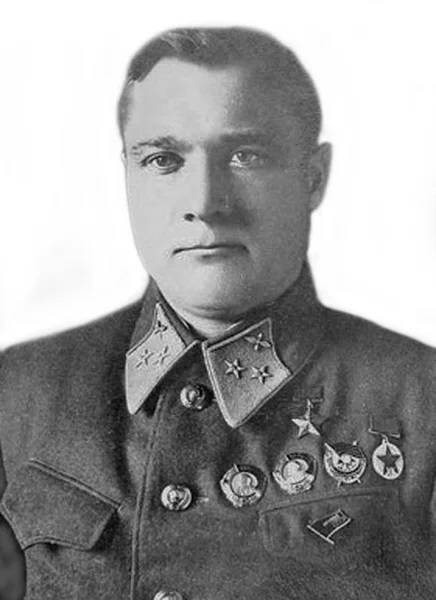
Major General of Aviation, Hero of the Soviet Union (for battles in Spain), chief of the Air Force of the Western Military District, who threw bombers at the Germans in the afternoon without fighter cover (despite the presence of the 43rd fighter air division in the okrug) and lost 22.06.1941 aircraft over the 738 526 on the ground), shot himself in the evening of June 23, 1941.
The rest were arrested, interrogated only later. Many were shot. Did it help? I don’t know, more precisely, I don’t presume to judge, but 1943 showed everything. The battle in the sky of the Kuban, when the Luftwaffe began to lose. When mass aircraft, which were not inferior to the German ones, went, when those who met aces in the air in June 1941 began to appear in command posts.
And - crackled ...
A lot can be said about the shortcomings in the Red Army Air Force system and the lack of an appropriate level of competency among the command. And you can build many versions on the topic of what gave the Germans such a huge advantage at first.
My summary list looks like this:
1. Lack of training for army and division commanders.
2. The insufficient level of training of commanders of air regiments.
3. The complete lack of coordination between the commanders of different types of troops.
4. Lack of communication at all levels.
5. Lack of operational management in a changing environment.
6. The ability of the Germans to create a tactical advantage in a certain sector of the front and make maximum use of it.
7. A definite advantage in the modern aircraft models of the Germans.
All. Enough. This list was enough for the Red Army Air Force to lose the first stage of the air war with a bang. However, the main causes of the defeat on 22.06 were corrected. Yes, over time, but corrected, so much so that by 1944, our aviation had surpassed the German one in all respects, from quantity to quality.
And not a word about the training of pilots. Here for me the axiom is the fact that our pilots were in no way inferior to the Germans.
Want an example?
On June 26, 1941, near the Moldavian town of Ungheni, a pair of Me-109E discovered a lone Soviet aircraft. The leader of the pair was Walter Bock, an experienced pilot, who accounted for 4 victories in France and 2 in Poland.
Our plane was piloted by a young lieutenant decommissioned the day before by color blindness, who was carrying documents on his I-153 to the headquarters of the air division.
Easy prey? Well, yes, Me-109E vs I-153, 200 hours of training Bokkh, combat experience, downed English, French and Polish planes ...
Well, you realized that everything went slightly against the plan of the Germans, right? The "Seagull" was spinning in a heavy-boiled snake, spitting out bursts of two of its ShKASs (very deadly for the 109th), but, as a result of circling the Germans and finding themselves in an advantageous position, the Soviet pilot fired the missiles he had.
And hit.
The slave did not seek further adventures and left. But Bokh ... Well, it happens ... But he did not suffer.
So began his combat path twice Hero of the Soviet Union Grigory Rechkalov.
In general, I have nothing more to add on this issue.
- Roman Skomorokhov
- Legends and myths of the Great Patriotic War. What is the reason for this beginning
Legends and myths of the Great Patriotic War. Aircraft of the initial period
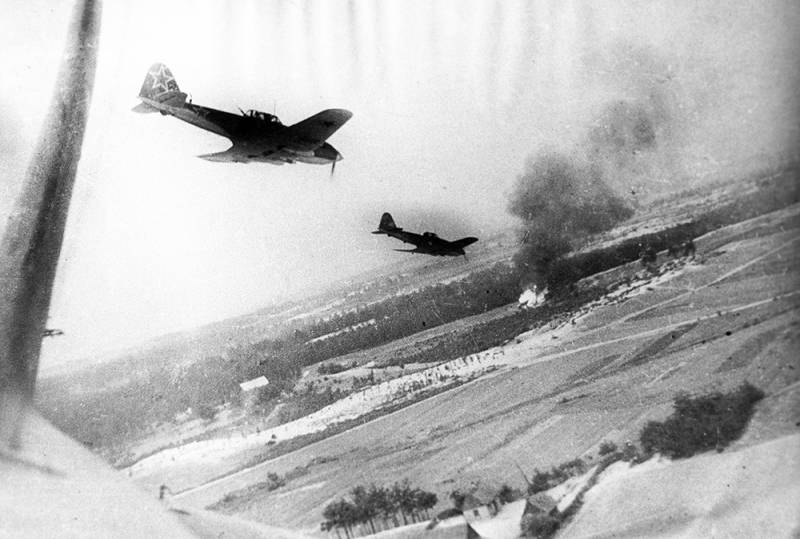
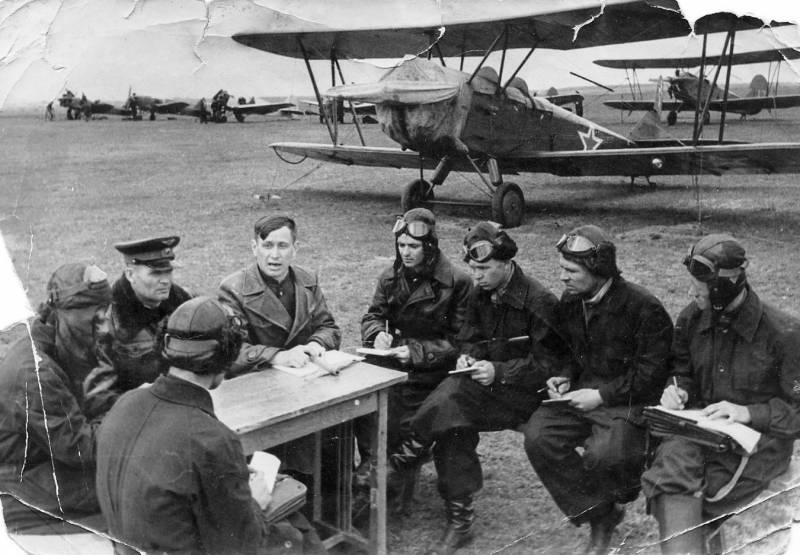
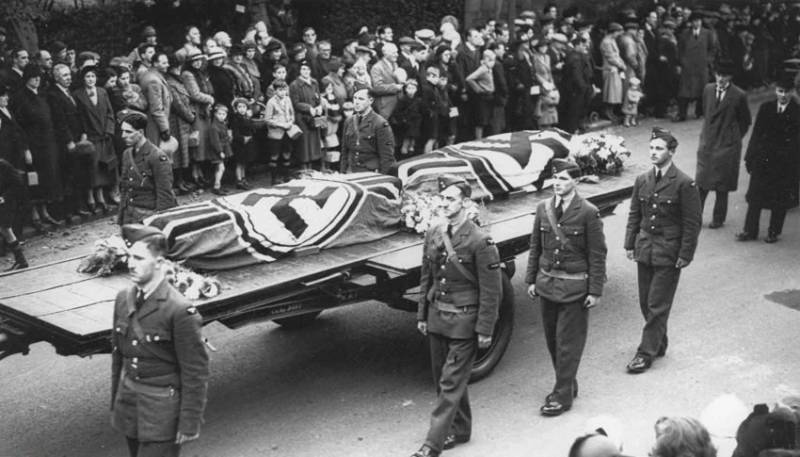
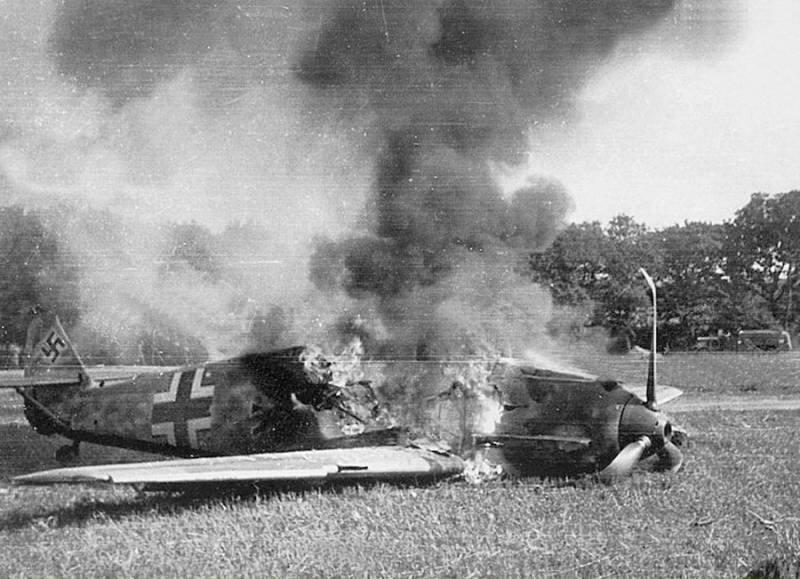
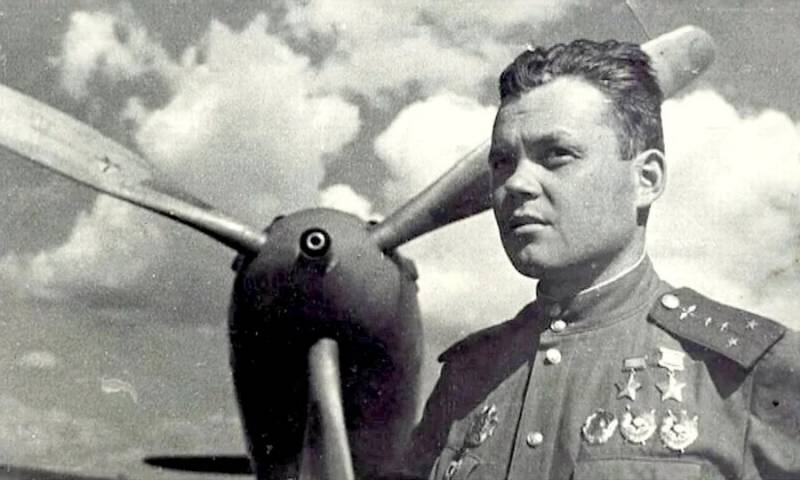
Information